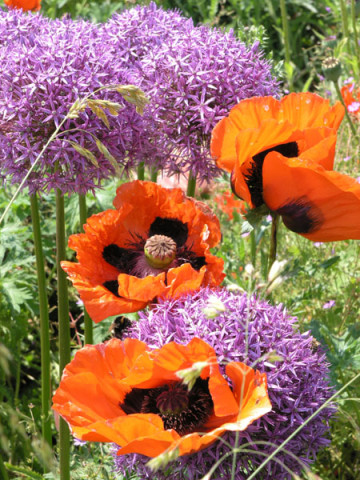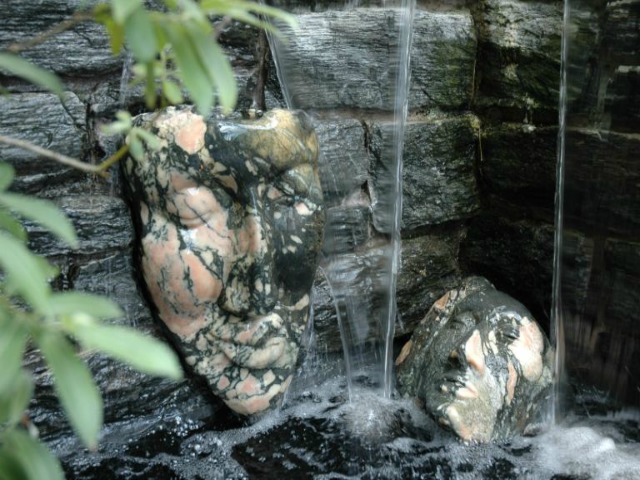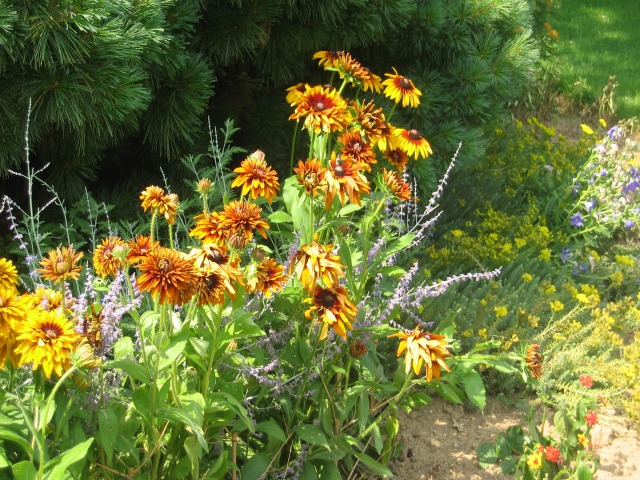Today is my birthday. Like most days, after taking a few sips of my morning coffee and giving thanks for being alive, I go out onto my rooftops to awaken my senses. Because I’m such an early riser, I observe the stars and moon begin to fade as daylight takes over.
It never ceases to amaze me, especially in the quiet of the early morning, how magical the garden feels. It doesn’t matter if my urban garden is in full bloom during the spring and summer or if the blooms are less abundant, like this time of year. I discover the beauty in what is presently there.
This attitude is so very different than what I experienced when I began to garden over 30 years ago. Today I look back at that young mother who knew little about parenting – and just a tad more about gardening – with empathy and love.
If I were to meet her today, here are some words of wisdom I would pass onto her.
- Become acquainted with your property. Take the time to familiarize yourself with trees, bushes, perennials and bulbs. If you don’t know the names of them, don’t worry. You’ll find out soon enough. The important thing is to get up close, and to look, touch and smell. Also, feel your land. Let it speak to you. Each property has its own history, energy, and aura.

- Develop a beginner’s mind. If you experience fear when you start learning something new, that’s OK. It’s more common than you think. Just note the fear and then try to ‘drop it’. Even if it persists, don’t let it stop you from moving forward with gardening. Rollo May wrote in The Courage To Create that “we create, not because we don’t have fears, but in spite of them.”
- Perceive gardening as an adventure. It truly is one of life’s great joys and mysteries. An entire curriculum for elementary, middle, or high school students could be developed around gardening – including history, math, English, science, art, and whatever else a teacher wanted to include. Can you imagine how exciting that could be?
- Start slowly. Select plant material that’s easy to grow and that you can reap pleasure from quickly like a butterfly bush, perennial grasses, sunflowers, veggies, and some native perennials. A love for gardening can start with planting easy to grow flowers.
- Take the time to learn the basics of gardening before spending a lot of money and time on developing your garden. There is a plethora of wonderful resources on the internet that offer a slew of terrific information. Invest in at least a couple of books that can serve as references as you begin your journey as a gardener.
- Let go of being a perfectionist. When I lived in the suburbs of Philadelphia, a neighbor of mine used to spend time placing rubber bands around the strap-like leaves of already spent daffodil blooms and pruning her shrubs into tight little balls. She worked relentlessly to keep her garden looking manicured. But what she never acquired was the artistry of gardening. Her addiction to being a perfectionist kept her from gaining access to her internal landscape where all creativity takes place (and which all of us possess).
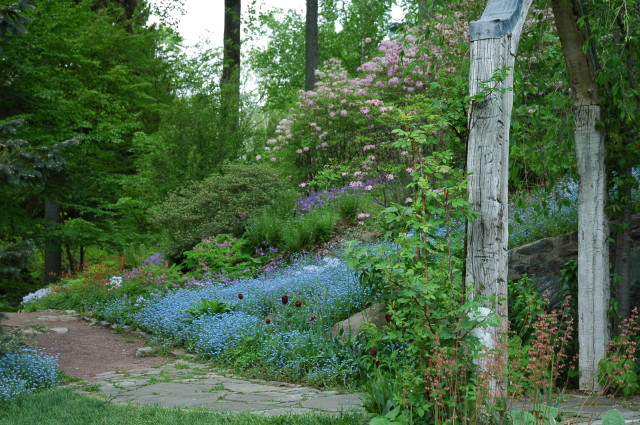
- Research all plant material before buying. Unless you’re a seasoned gardener who is familiar with a large variety of specimens, it’s easy to impulse buy. You see a plant, love it, and feel a sweeping desire to buy it. Don’t. Even if a plant has a tag with information on it, it’s important to go home, decide on the precise location where you want to plant it, and be reasonably certain that the plant will not only thrive there but complement other plant material that’s already in the ground.
- Think of yourself as an artist. You have a choice. You can plant some annuals in your front bed and call it a day, be a gardener who strictly weeds and maintains the plant material, OR you can experience yourself as an artist who is beginning a new endeavor. As I discuss in my book, Digging Deep: Unearthing Your Creative Roots Through Gardening, 10th Anniversary Edition, your attitude has everything to do with the outcome of your garden (and life).
- Use gardening as a tool for well-being – physically, emotionally, and spiritually. Not only is gardening good for the soul but it also can be a dynamic physical activity. It deserves no less attention than exercising, taking a yoga class, or meditating. It’s a wonderful tool for healing, for gaining access to your creativity, for minimizing stress, and for appreciating the beauty surrounding you.
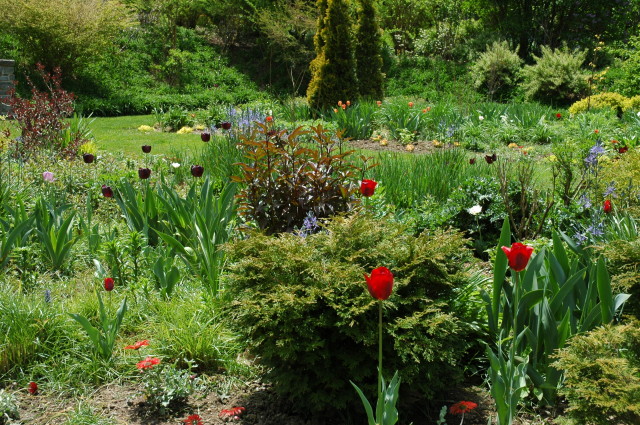
- Develop a relationship with your garden. If you slow down, take the time to observe, touch, and hear all that is happening around you in your landscape, over time, you will be hard pressed not to feel an emotional attachment to your garden. If you treat your garden with the respect it deserves, it will give you much more than you dare to imagine in return.
- Initiate a sense of play and humor in the garden. In other words, don’t take it so damn seriously. This is not heart surgery. You’re doing what our ancestors have been doing for thousands of years….getting down on all fours, digging, planting, weeding, harvesting, and maintaining the earth. It’s an intrinsic and natural part of being human.
- Practice failing spectacularly. Yep, that’s what I said. As you develop some skills and a sense of the craft of gardening, it’s time to start taking risks. And once you start taking risks, you’re going to fail at some of what you attempt (which is a good thing).
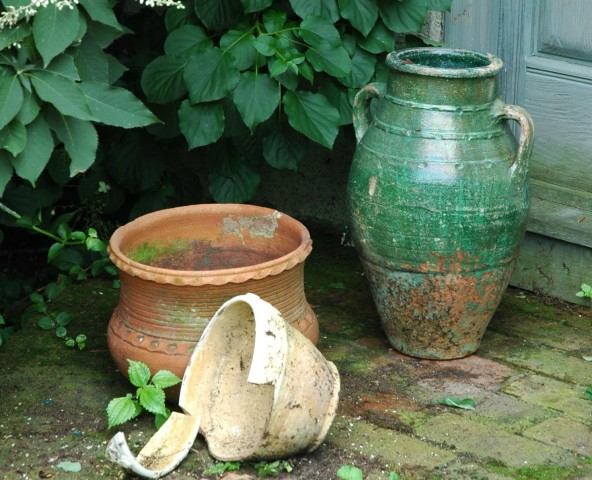 I failed spectacularly when I created what I thought was going to be a spectacular rose garden on the side of my house. After buying 30 plus rose bushes and planting and maintaining them with TLC, I knew within a year that it was not working. So, I used some in my perennial beds, but gave the majority of them away to gardening pals. Rather than feeling like I had ‘screwed up’, I just saw it as another experience to learn. And wouldn’t you know that years later, I planted several magnificent climbing roses on arches and pergolas in my front yard perennial garden with great success.
I failed spectacularly when I created what I thought was going to be a spectacular rose garden on the side of my house. After buying 30 plus rose bushes and planting and maintaining them with TLC, I knew within a year that it was not working. So, I used some in my perennial beds, but gave the majority of them away to gardening pals. Rather than feeling like I had ‘screwed up’, I just saw it as another experience to learn. And wouldn’t you know that years later, I planted several magnificent climbing roses on arches and pergolas in my front yard perennial garden with great success.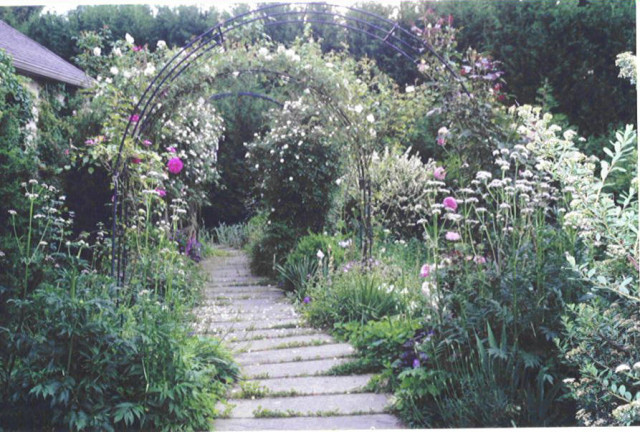
- Follow your instincts. This is a tough one. As a beginning gardener, it’s important to learn the craft and design of gardening: in a sense, it’s almost like following a recipe. But once you’ve gained enough traction, it’s time to unlearn and break some of those rules and let your instincts kick in. You want to paint a chartreuse fence even though all of the doyennes of style are saying that black is the new color for this year’s garden? Or you want to design a garden whose two predominant colors are orange and purple? Do it. True artists know that they need to follow their instincts at all costs.
- Garden to please yourself. Unless you work as a professional gardener, the only person you need to please in the garden is yourself. Don’t compare your style of gardening or how your garden looks with anyone else. If it brings you joy, that’s all that matters.
Now it’s your turn. Share your words of wisdom with us!
